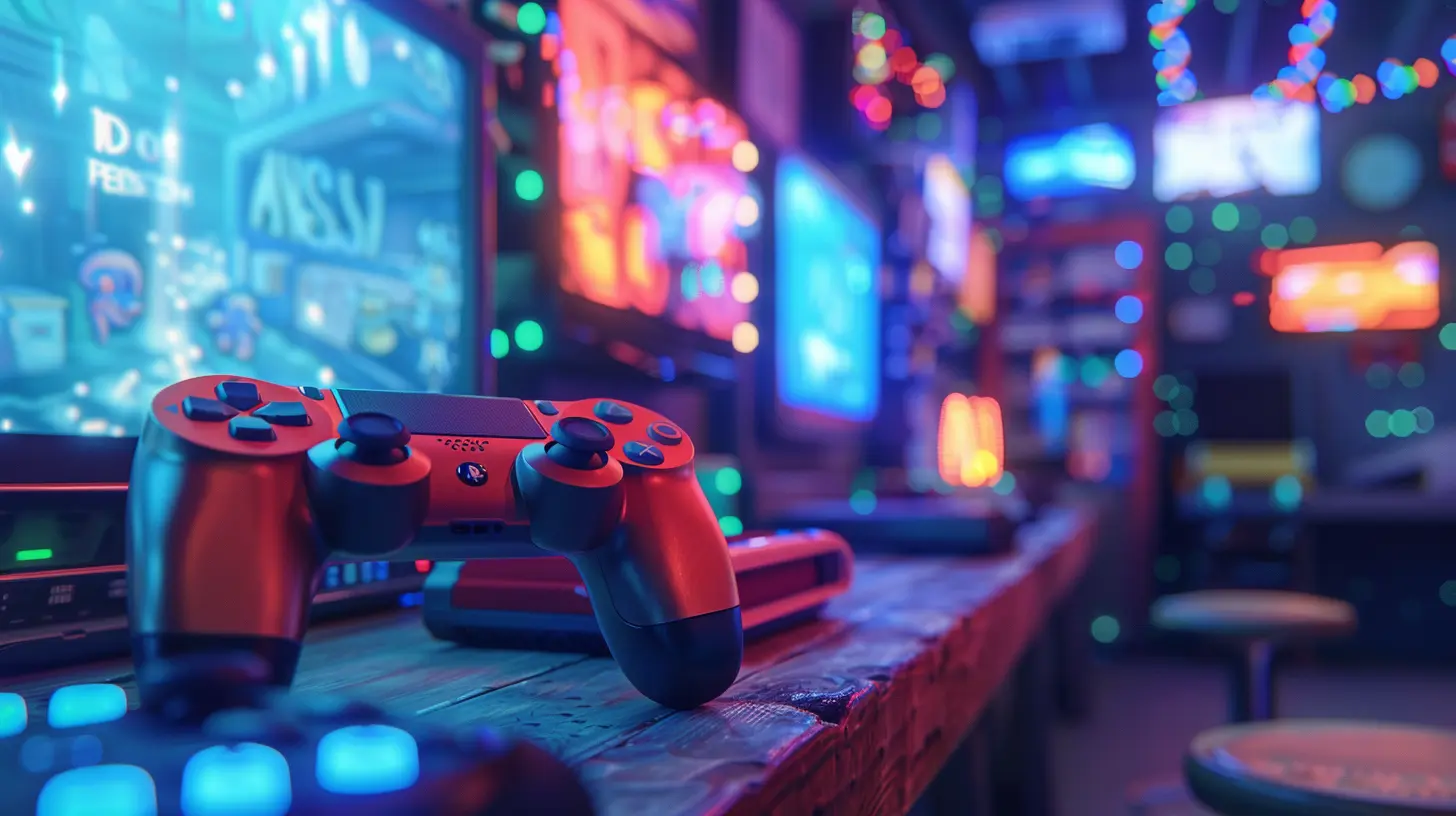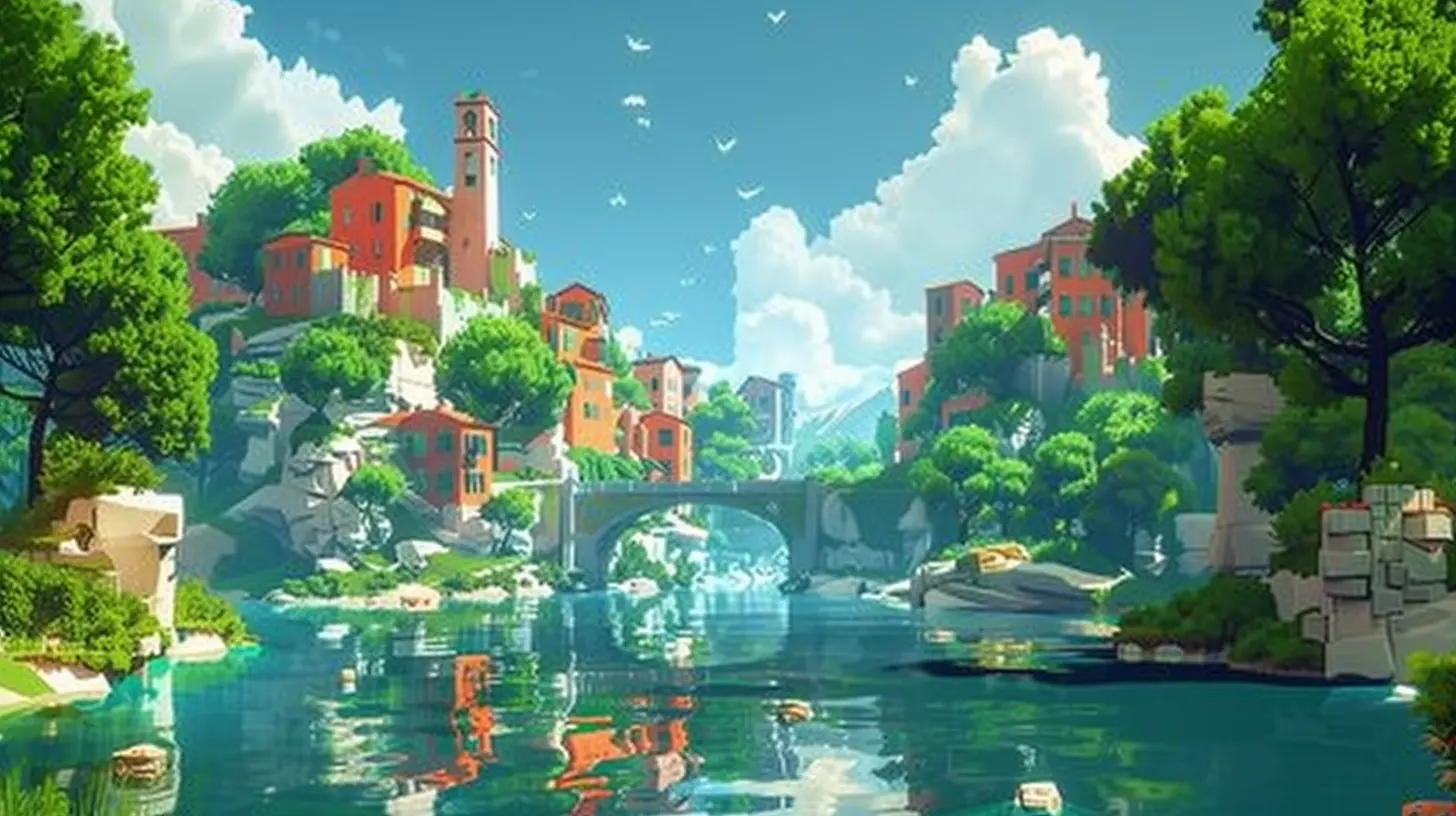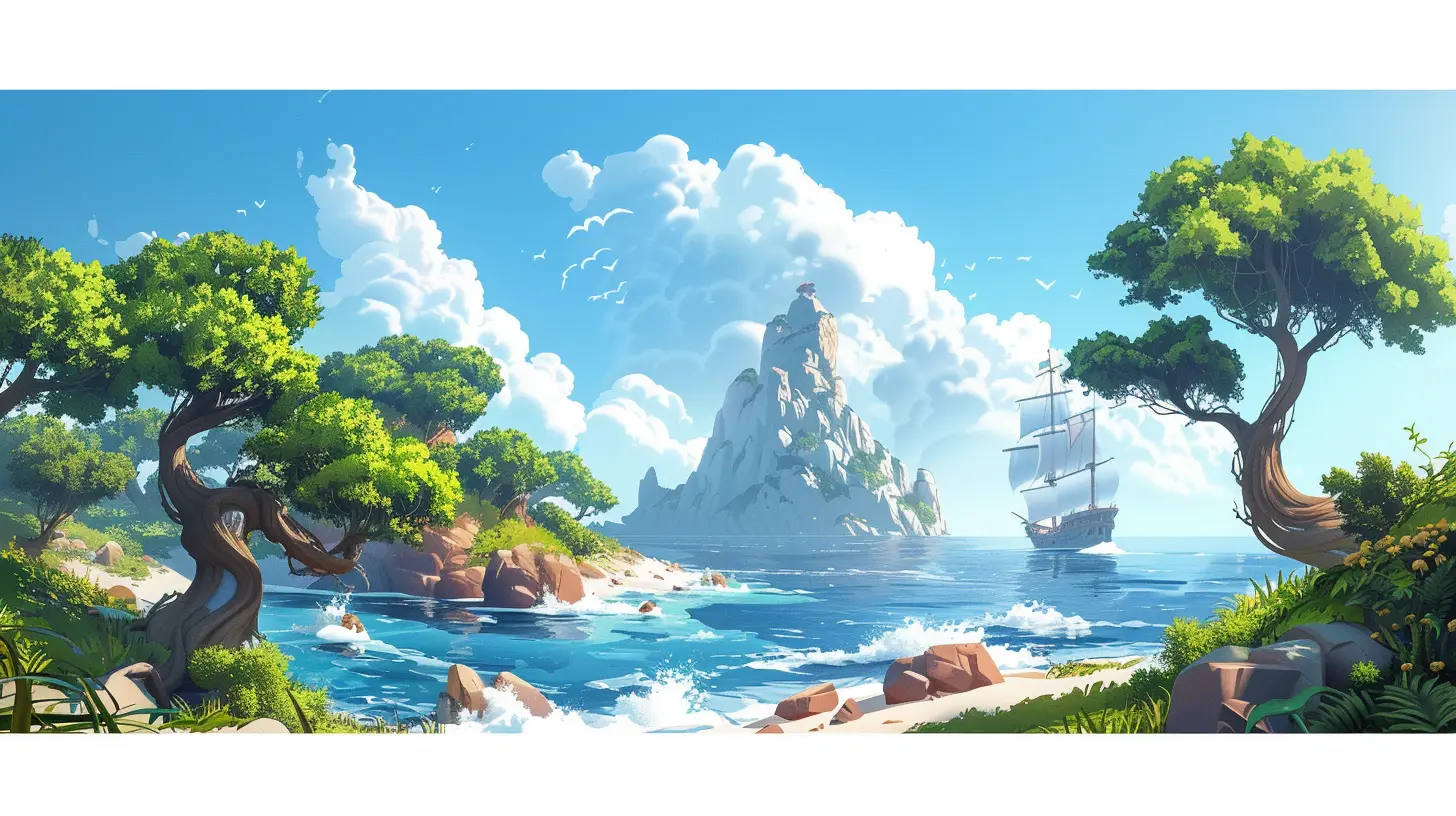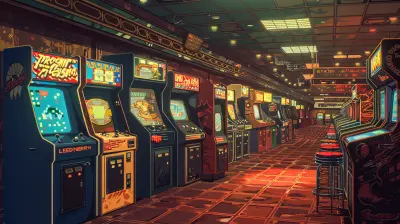How to Balance Innovation with Familiarity in Game Design
6 February 2025
When it comes to game design, there’s always this delicate dance between taking bold steps into uncharted territory and staying anchored to what players already know and love. It’s a lot like walking a tightrope—lean too far on innovation, and you might confuse or alienate your audience; rely too much on the familiar, and the game risks becoming stale or uninspiring.
But here’s the big question: how do you find that sweet spot? How do you create something that feels fresh yet comforting, groundbreaking yet accessible? If you’re scratching your head over this, don’t sweat it. This guide dives into the nitty-gritty of balancing innovation with familiarity in game design. Grab your controller (or keyboard), and let’s break it down.
Why Balancing Innovation and Familiarity Matters
Before we dive into the "how," let’s take a moment to talk about the "why." Why does blending the two even matter? The answer lies in human psychology. People crave novelty—it’s exciting, engaging, and stimulating. But at the same time, we’re creatures of habit. Familiarity feels safe and comforting; it gives us a sense of grounding.Think about some of the most successful games out there. Titles like The Legend of Zelda: Breath of the Wild pushed boundaries with an open-world structure and innovative mechanics, but they also retained hallmark elements like puzzles, dungeons, and an overarching sense of adventure. It was fresh… but it still felt like Zelda. That’s the balance game developers aim for—a mix of "Whoa, that’s cool!" and "Ah, this feels like home."
The Risks of Leaning Too Far in Either Direction
Here’s the thing: it’s a balancing act, and leaning too far on either side can have consequences. Let’s break it down:Innovation Overload: When Games Go Too Far
Sure, innovation can be awesome, but there’s a catch. Go too far off the beaten path, and you might lose your audience entirely. Players naturally anticipate a certain level of familiarity when picking up a game. If they don’t recognize the core gameplay loop or mechanics, they can feel overwhelmed or even frustrated.Take No Man’s Sky at launch. The game promised innovation on an unprecedented scale with its procedurally generated universe. But the lack of familiar gameplay hooks (and unmet player expectations) left many feeling adrift. It’s since improved, but it’s a cautionary tale of how too much innovation can alienate players.
Over-Reliance on the Familiar: Playing It Too Safe
On the flip side, sticking too closely to tried-and-true formulas can make a game feel stale. If everyone designs the same battle royale mechanics or churns out a sequel with little to no evolution (cough sports game franchises cough), players might start to think, “Haven’t I played this before?”Look, nobody likes a copycat. Sure, familiarity breeds comfort, but gamers will notice if your project feels like a reskinned version of something else. At best, they’ll roll their eyes; at worst, they’ll look elsewhere.
Strategies for Achieving the Balance
So how do you actually strike this balance? It’s easier said than done, but here are some practical strategies game developers can use:1. Build on Familiar Foundations with a Twist
Ever heard of the saying, “Don’t reinvent the wheel”? Well, it applies here. Instead of scrapping existing frameworks, build on them with unique twists. Think of it like baking a classic chocolate cake but adding a surprise layer of caramel in the middle—it’s still cake, but now it’s got your unique flavor.For example, Stardew Valley took the familiar farming simulator framework of Harvest Moon but added deeper social interactions, broader customization options, and an indie charm that made it fresh and engaging.
2. Introduce Gradual Innovation
One way to ensure players don’t feel overwhelmed is by introducing innovations gradually. Start with something familiar, then slowly layer in new mechanics or ideas. It’s like teaching someone to swim—start in the shallow end before plunging into the deep end.Take Portal. Initially, the game feels familiar enough—it’s a puzzle platformer. But as you progress, the portals and physics-based puzzles grow more complex, pushing you into innovative gameplay territory without feeling jarring.
3. Listen to Your Players
If you want to know whether your balance of innovation and familiarity is hitting the mark, listen to the people you’re designing for—your players. Whether it’s through beta testing, community feedback, or focus groups, understanding your audience’s expectations is invaluable.Game franchises like Dark Souls owe much of their success to developers actively engaging with their community. While the series innovated with its punishing difficulty and cryptic storytelling, it stayed grounded in consistent themes and mechanics that fans adored.
4. Innovate in One or Two Areas
Here’s a pro-tip: don’t try to reinvent everything at once. Instead, focus on innovating one or two aspects while keeping the rest grounded. This keeps the game approachable while still offering something new.Look at Hades. Supergiant Games innovated by weaving roguelike mechanics with a rich, evolving narrative—something rarely seen in the genre. Everything else, like combat and progression, felt comfortably familiar to fans of their previous games.
5. Leverage Nostalgia Wisely
Nostalgia is a powerful tool, but it’s a double-edged sword. Use it too much, and it feels manipulative. Use it wisely, and it becomes a bridge between familiarity and innovation.Take Final Fantasy VII Remake. While it leaned heavily on the nostalgia of the original game, it also introduced dramatic changes to combat and expanded the story in new ways. It was a brilliant example of how nostalgia and innovation can go hand-in-hand. 
The Role of Iteration in Finding Balance
Game design is rarely a one-and-done process. It’s iterative, which means you’ll be tweaking and refining along the way. Playtesting is your best friend here. It’ll help you identify which innovative mechanics wow players and which ones leave them scratching their heads.Don’t be afraid of trial and error. A lot of iconic game mechanics—like Mario’s jump or Doom’s shooting mechanics—weren’t built perfectly on the first try. Iteration allows you to blend the familiar with the new in a way that feels seamless.
Real-World Examples of Balanced Game Design
Sometimes, the best way to understand a concept is by looking at it in action. Let’s check out a few games that nailed the balance:1. The Legend of Zelda: Breath of the Wild
We’ve mentioned this before, but it’s worth repeating. Nintendo took the familiar Zelda framework and flipped it on its head with an open-world approach, survival elements, and emergent gameplay. Yet, iconic mechanics like solving puzzles and fighting bosses remained intact.2. Animal Crossing: New Horizons
This game offered the cozy, familiar gameplay the series is known for, like decorating, fishing, and chatting with villagers. But it also introduced crafting, deep customization, and online multiplayer, pulling in both long-time fans and newcomers.3. God of War (2018)
The reboot of God of War is a textbook case of balancing familiarity with innovation. The series’ core identity—mythological storytelling and brutal combat—remained, but it was reimagined with a more personal narrative, a behind-the-shoulder camera, and RPG-like progression systems.Wrapping It Up
Balancing innovation with familiarity in game design is no easy feat. It’s more art than science, requiring a deep understanding of your audience, a willingness to take risks, and the discipline to iterate until it feels just right. Nail it, and you can create an experience that not only resonates with players but also stands the test of time.So, whether you’re a solo indie developer or part of a huge studio, remember this: bold ideas and tried-and-true concepts don’t have to be at odds. When woven together thoughtfully, they create something magical—a game that feels both fresh and comfortingly familiar.
all images in this post were generated using AI tools
Category:
Game DesignAuthor:

Francesca West
Discussion
rate this article
9 comments
Dylan Frye
Great insights! Balancing innovation with familiarity is like walking a tightrope—it takes skill and confidence. It's all about creating that nostalgic spark while sprinkling in fresh mechanics. As gamers, we crave the comfort of the familiar but also yearn for that thrilling surprise. Can’t wait to see what’s next!
March 17, 2025 at 4:02 PM

Francesca West
Thank you! You’ve perfectly captured the essence of our struggle in game design. Balancing nostalgia with fresh ideas is indeed a delicate dance, and I appreciate your enthusiasm for the journey ahead!
Archer Blair
Ah yes, the age-old quest for the Holy Grail of game design: creating something fresh while slapping a nostalgic sticker on it. Who knew innovation came with a side of déjà vu?
March 3, 2025 at 3:48 AM

Francesca West
Absolutely! Striking that balance is key—innovating while honoring the classics can create a truly engaging experience for players.
Scout McCaw
Great insights on balancing innovation and familiarity in game design! It's vital to keep players engaged while also respecting their nostalgia. Looking forward to seeing how developers apply these principles!
February 24, 2025 at 3:50 PM

Francesca West
Thank you! I'm glad you found the insights valuable. Balancing innovation and nostalgia is key, and I'm excited to see how developers embrace these principles in their future games!
Gunnar Porter
This article adeptly explores the delicate dance between innovation and familiarity in game design. Striking the right balance is crucial for engaging players while ensuring accessibility. Embracing new ideas while respecting established mechanics can lead to memorable experiences. A must-read for developers aiming to captivate and retain their audience!
February 22, 2025 at 4:57 PM

Francesca West
Thank you for your thoughtful comment! I’m glad you found the article insightful and appreciate your emphasis on the importance of balancing innovation with established mechanics in game design.
Caelum Baker
This article offers insightful perspectives on navigating the delicate balance between innovation and familiarity in game design. Embracing new ideas while respecting established mechanics can create engaging experiences. I appreciate the thoughtful analysis here; it prompts important reflections for developers aimed at captivating both new and veteran players.
February 21, 2025 at 4:41 AM

Francesca West
Thank you for your thoughtful feedback! I'm glad you found the insights valuable for game developers navigating this balance.
Uma McIlroy
Great insights! Balancing innovation and familiarity is key for engaging players.
February 17, 2025 at 5:42 PM

Francesca West
Thank you! I completely agree—striking that balance is essential for creating an enjoyable player experience.
Wyatt McDermott
Striking the right balance between innovation and familiarity in game design is like crafting a perfect recipe: a pinch of the new enhances the nostalgic flavor, while too much experimentation can turn a beloved dish into an unrecognizable mess.
February 17, 2025 at 4:20 AM

Francesca West
Absolutely! It’s crucial to blend fresh concepts with familiar elements to maintain player engagement while honoring the essence of beloved games.
Bryson McTavish
Balancing innovation and familiarity in game design is like making the perfect sandwich. Too much mustard, and you scare away the pickles! Just enough spice keeps players coming back for more without losing their taste for the classics!
February 14, 2025 at 5:35 PM

Francesca West
Great analogy! Striking that perfect balance between innovation and familiarity is key to creating engaging and memorable gaming experiences.
Honor Martinez
Striking balance fosters player loyalty and engagement.
February 6, 2025 at 4:50 PM

Francesca West
Absolutely! Balancing innovation with familiarity enhances player loyalty by creating a comfortable yet exciting experience, keeping players engaged and invested in the game.
MORE POSTS

The Importance of Playtesting in Game Design

Ranking the Best Nintendo Console Exclusives

The Role of Storytelling in Shaping MMO Player Engagement

Chasing the Leaderboard: How to Get a High Score in Arcade Games

Designing Crafting Systems That Don't Overwhelm Players

Exploring the Most Ambitious Projects in Early Access

Upcoming Horror Titles That Will Keep You Up at Night